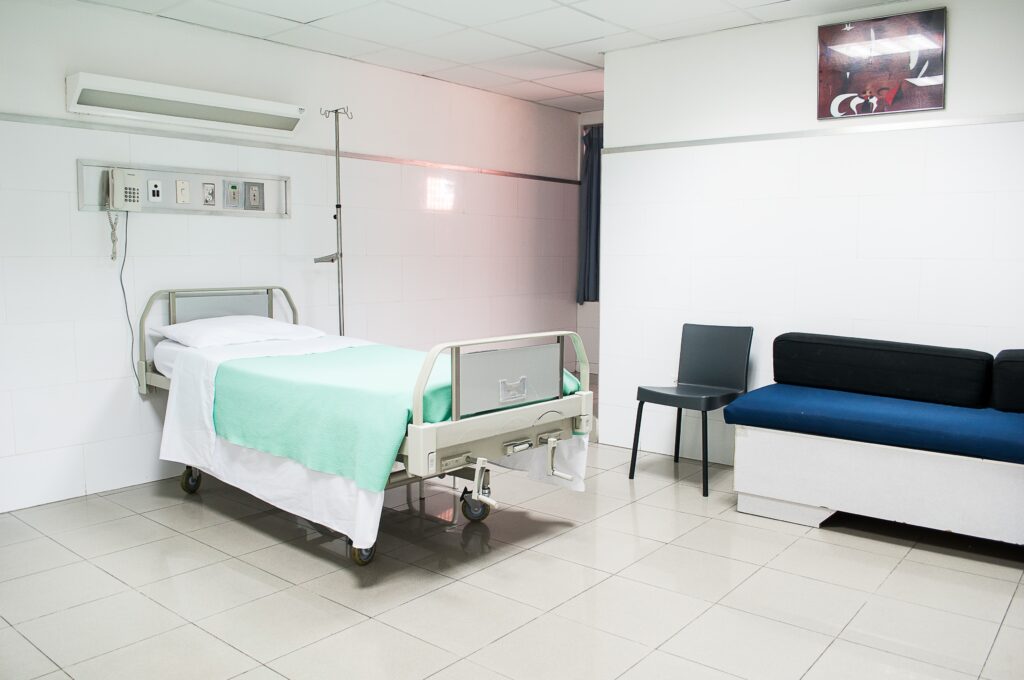Welcome to our comprehensive guide on room rent limits in health insurance. When it comes to hospitalization expenses, understanding the implications of room rent limit is crucial to ensure optimal coverage and avoid substantial out-of-pocket expenses. In this article, we will explore the concept of room rent capping, different types of room rent limits in health insurance coverage, the advantages of plans without room rent caps, the significance of room rent limits, factors to consider when assessing room rent limits, and tips for choosing the right health insurance policy. By the end, you will have a clear understanding of how room rent limits impact your health insurance claim and how to navigate this aspect effectively.

Table of Contents
Room Rent Limits: An Overview
Room rent limits refer to the maximum amount that an insurance policy will cover for room charges in a hospital. When you or a loved one requires hospitalization, the room rent is a significant component of the overall medical expenses. Understanding the implications of room rent limits is crucial to ensure that you receive optimal coverage without incurring substantial out-of-pocket expenses.
Exploring Room Rent Capping in Health Insurance
Room rent capping in health insurance refers to the maximum amount an insurance company will pay towards the cost of a hospital room per day during an insured’s hospitalization. If the cost of the room exceeds this limit, the insured individual will have to bear the remaining cost out-of-pocket.
The room rent cap is specified in the health insurance policy document. It can be a specific amount or a percentage of the sum insured, or it may be capped at a certain number for each day of hospitalization. For instance, if an individual purchases a health insurance policy with a room rent cap of Rs. 15,000, or a policy with a room rent cap set at 3% of the sum insured (which, for a sum insured of Rs. 5 lakhs, also equates to Rs. 15,000), these are the maximum amounts the insurance company will pay towards room rent per day of hospitalization. Conversely, a policy might have a room rent cap of Rs. 2,000 per day, regardless of the total sum insured.
Different Types of Room Rent Limits in Health Insurance Coverage
There is no standard rule for room rent capping across different health insurance companies. Each company has its own policies, which are clearly stated in the policy document. However, some common types of room rent capping include:
No Capping on Room Rent
Certain health insurance policies do not place any cap on room rent, allowing policyholders to choose a room type based on their needs and comfort.
Co-payment on Room Rent
In some cases, policyholders may be required to share the cost of room rent with the insurance company. This co-payment or co-pay means that the policyholder and insurance company jointly bear the room rent and associated costs.
Room Rent with Capping
Insurance companies often set a cap on the room rent that a policyholder can claim. If the room rent exceeds this limit, the insurance company will not cover the additional expenses.
Room Rent Cap on Specific Room Types
Policyholders may choose a hospital room type based on availability and their requirements. If their health insurance policy sets a cap on a specific room type, they can either choose a room that falls within this limit or bear the extra expenses of a room that exceeds this limit.
Room Rent Waiver Add-On
This add-on can be purchased with an insurance policy that has room rent capping. The room rent limit will be waived off under this add-on.
Advantages of having Health Insurance plans without Room Rent Caps
Health insurance plans without room rent caps can offer significant advantages to policyholders. Here are some key benefits of such plans:
- Greater Flexibility and Comfort: With no room rent caps, policyholders can choose hospital rooms that best meet their comfort and needs. This means you can opt for a private room or a suite without worrying about exceeding a predetermined limit set by your insurance plan.
- No Out-of-Pocket Expenses for Room Rent: Since there’s no cap on the room rent, you won’t have to pay the difference if the actual room rent is higher than a certain limit. This can significantly reduce your out-of-pocket expenses during hospitalization.
- Avoidance of Proportionate Deductions: In plans with room rent caps, insurers often apply proportionate deductions to other associated costs if the actual room rent exceeds the cap. In contrast, health insurance plans without room rent caps eliminate this issue, ensuring that your claim is not reduced due to the cost of your hospital room.
- Maximized Insurance Coverage: Without a room rent cap, you can fully utilize your health insurance coverage. The entire sum insured can be used for medical treatments and other hospitalization expenses, instead of a portion of it being reserved for room rent.
- Easier Claims Process: Plans without room rent caps can simplify the claims process. You don’t have to worry about calculating the allowable room rent or the potential impact of your choice of room on your claim amount.
- Reduced Stress During Hospitalization: Health issues and hospitalizations are already stressful. Having a health insurance plan without room rent caps means one less thing to worry about during such challenging times. You can focus on your recovery rather than worrying about financial constraints.
While health insurance plans without room rent caps offer several benefits, they may also come with higher premiums. Therefore, it’s essential to consider your financial situation, health risks, and personal preferences when choosing a health insurance plan. Always read the policy document carefully and consult with your insurance advisor if you have any doubts or queries.
The Significance of Room Rent Limits
- Financial Implications: Room rent limits play a pivotal role in determining the overall coverage provided by a health insurance policy. Choosing a plan with a low room rent limit can result in inadequate coverage, leaving you liable to pay the remaining expenses. It is essential to consider this aspect carefully to avoid financial strain during medical emergencies.
- Choice of Hospital: Room rent limits often dictate the category of hospitals that policyholders can avail of for cashless hospitalization. Higher room rent limits provide access to a broader network of hospitals and better healthcare facilities. By understanding these limits, you can make an informed decision and select a policy that aligns with your healthcare preferences.
- Room Category and Facilities: The room rent limits in health insurance policies are generally linked to the type of room category chosen for hospitalization. Policies with lower room rent limits may only cover general wards, while those with higher limits enable you to avail of semi-private or private rooms. The choice of room category impacts factors such as privacy, comfort, and access to specialized medical services during hospitalization.
Proportionate Deductions Calculation
When Mr. Aman’s claim is calculated, the insurance company applies proportionate deductions, which are calculated as follows:
- Room Rent Allowed: Rs. 5,000
- Actual Room Rent: Rs. 8,000
- Proportionate Deductions = Room Rent Allowed / Actual Room Rent * 100 = 62.5%
The proportionate deduction of 62.5% is then applied to the other costs associated with the hospital stay, including the cost of surgery, doctor visits, tests, and medicines. The final amount payable by the insurance company is determined after these calculations.
Looking for comprehensive employee benefits coverage without room rent limits?
Discover our employee benefits platform and secure the perfect health insurance plan today!
Factors to Consider When Assessing Room Rent Limits
When evaluating health insurance policies, it is crucial to consider the following factors in relation to room rent limits:
- Geographical Location: The room rent limits can vary based on the city or region in which you reside. It is important to understand the prevailing rates in your area to ensure that you select a policy that offers adequate coverage for hospitalization expenses.
- Inflation-Adjusted Limits: Given the rising cost of healthcare services, it is advisable to opt for policies that offer inflation-adjusted room rent limits. This ensures that the coverage keeps pace with medical inflation and provides sufficient financial protection.
- Co-Payment Clause: Some health insurance policies may have a co-payment clause, where the policyholder is required to bear a certain percentage of the room rent charges. Understanding this aspect is vital to avoid any surprises or unexpected expenses during hospitalization.
Impact of Room Rent Limits on Health Insurance Claim
The room rent and applicable cap are key factors considered by insurance companies when calculating claim amounts. The total claim amount can increase or decrease based on whether the chosen room falls under or over the room rent cap.
Consider a scenario where an individual, Mr. Aman, has a health insurance policy of Rs. 5 lakhs with a room rent cap of 1% of the sum insured. If he chooses to stay in a room costing Rs. 8,000 per day, despite his insurance policy allowing only a room costing Rs. 5,000 per day, he will have to bear the difference of Rs. 3,000 per day. However, room rent does not work as simply as this. Instead, it functions on the principle of proportionate deductions, calculated as the percentage of room rent allowed upon actual room rent.
Conclusion
Room rent limits play a significant role in determining the overall coverage provided by a health insurance policy. It is important to choose a plan that aligns with your healthcare preferences, offers adequate coverage, and provides flexibility and comfort during hospitalization. While plans without room rent caps offer benefits such as greater choice, minimized out-of-pocket expenses, and reduced stress, it’s essential to consider the financial implications and evaluate your healthcare needs before making a decision. By carefully assessing room rent limits, comparing policies, and understanding the impact on your claim, you can make an informed choice and secure the right health insurance policy to protect yourself and your loved ones during medical emergencies. Remember to read the policy document thoroughly, seek clarification when needed, and consult with an insurance advisor to ensure you choose a plan that meets your specific requirements.
FAQs
What are the different types of room rent limits in health insurance coverage?
Common types of room rent limits include no capping on room rent, co-payment on room rent, room rent with capping, room rent cap on specific room types, and room rent waiver add-on.
What are the advantages of health insurance plans without room rent caps?
Health insurance plans without room rent caps offer benefits such as greater flexibility and comfort in choosing hospital rooms, no out-of-pocket expenses for room rent, avoidance of proportionate deductions, maximized insurance coverage, easier claims process, and reduced stress during hospitalization.
How does the choice of room impact the health insurance claim?
The total claim amount can increase or decrease based on whether the chosen room falls under or over the room rent cap. If the actual room rent exceeds the allowed limit, proportionate deductions may be applied, affecting the claim amount.




